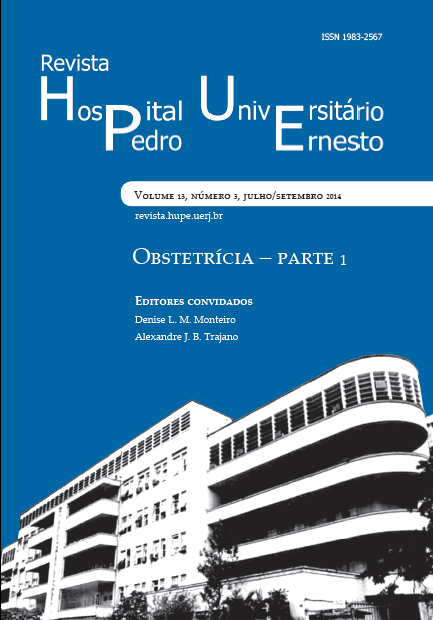Angiogenic and anti-angiogenic factors in the pathophysiology of preeclampsia and their role in current obstetrics practice
DOI:
https://doi.org/10.12957/rhupe.2014.12134Abstract
Pre-eclampsia is a leading cause of maternal morbidity and mortality, perinatal death, premature birth and intrauterine growth restriction. Although most of women present a good outcome, the delay in diagnosis may contribute to the evolution to a more severe form, eclampsia. A large number of studies have been published on this subject, yet the etiology of pre-eclampsia remains unknown. The study of angiogenic factors, such as vascular endothelial growth factor (VEGF) and placental growth factor (PlGF), and antiangiogenic factors, such as soluble fms-like tyrosine kinase-1 (sFlt-1), allows the expansion of knowledge about the pathophysiology of pre-eclampsia. Patients analyzed after diagnosis of pre-eclampsia had higher serum levels of sFlt-1 and lower PlGF and VEGF than the control group matched for gestational age. sFlt-1 acts as antagonist as it binds to angiogenic factors and prevents their interaction with cell surface receptors. These changes were more pronounced when the patient developed early pre-eclampsia (< 34 weeks) or intrauterine growth restriction. These factors are already being used for prediction of the disease in the first trimester, especially the early presentations of the disease, and are promising to help in the differential diagnosis between pre-eclampsia and diseases that have similar clinical picture, such as systemic lupus erythematosus (SLE). This autoimmune disease affects mainly women of reproductive age and is associated with adverse pregnancy outcomes. Few studies have evaluated the angiogenic and antiangiogenic factors in women with SLE. Apparently, there is an increased sFlt-1 in patients with SLE and pre-eclampsia, however the results can not yet be applied in clinical practice considering the paucity of data. Prospective studies in pregnant women with SLE are being developed for the differential diagnosis of hypertensive disorders during pregnancy, and may directly influence the support provided to women with high risk pregnancy.Downloads
Published
2014-07-29
Issue
Section
Artigos


